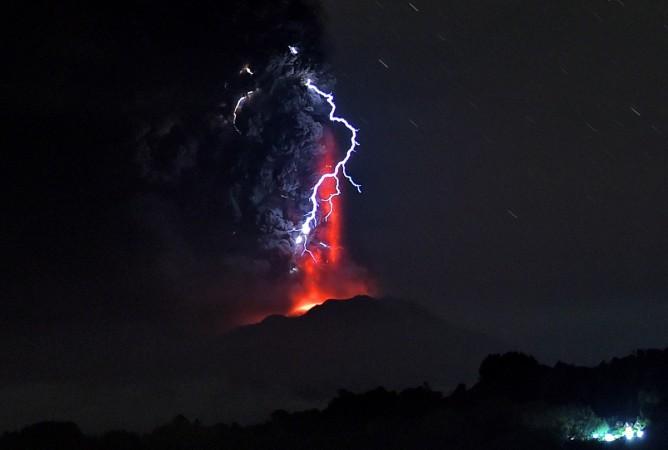Scientists have recorded the sound of volcanic thunder for the first time ever.
While the lightning that happens as a result of an eruption is well-documented and observers have heard the thunder that follows it, it has seldom been isolated from the rumble of the volcano itself, reports AGU.org.
"It's something that people who've been at eruptions have certainly seen and heard before, but this is the first time we've definitively caught it and identified it in scientific data," said Matt Haney, a seismologist at the Alaska Volcano Observatory and lead author of a new study published in the Geophysical Research Letters.
Scientists were able to record thunder by using microphones on an island near an erupting volcano and used maps of lightning strikes to identify the exact sounds of thunder apart from the explosive eruption itself.
For this study, the research team studied the Bogoslof volcano in Alaska's Aleutian Islands in the northern Pacific Ocean. Between December 2016 and August 2017, the volcano erupted over 60 times, spewing out plumes of ash that reached over six kilometers into the sky.
The researchers have said that analyzing and detecting volcanic thunder and lightning could be a way to estimate the size of the plume of ash that gets spewed out of an eruption. This study found that the intensity of the lightning was matched by the thunder that followed it, hence, "Understanding where lightning is occurring in the plume tells us about how much ash has been erupted, and that's something that's notoriously difficult to measure," said Jeff Johnson, a geophysicist at Boise State University who was not connected to the new study.

"So, if you're locating thunder over a long area, you could potentially say something about how extensive the plume is," he explained.
Lightning from volcanic eruptions are common, notes the report. Various particles that get hurled out from within the Earth like smoke, ash and magma cause violent rumblings that shake the ground for miles. To add drama to the already magnificent display, the ash from the plumes, rub against ice crystals that might be present and get electrified, leading to massive lightning bolts.
During a storm, lightning is followed by claps of thunder, it is the same for volcanic lightning as well. However, scientists did not think it was possible to distinguish the delicate sound of thunder from the more noisy eruption itself.
"If people had been observing the eruption in person, they would have heard this thunder," Haney said. "I expect that going forward, other researchers are going to be excited and motivated to look in their datasets to see if they can pick up the thunder signal."

















